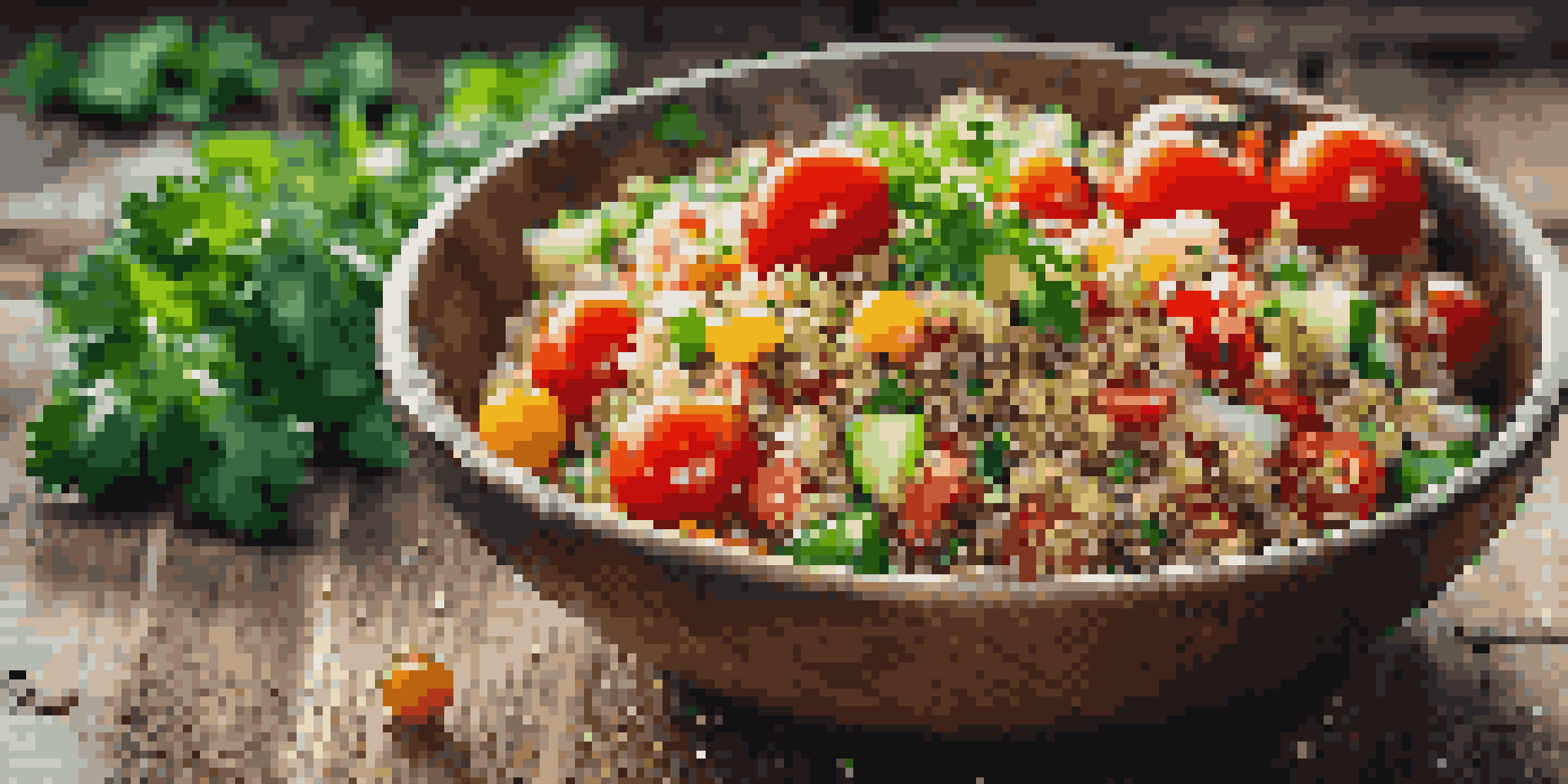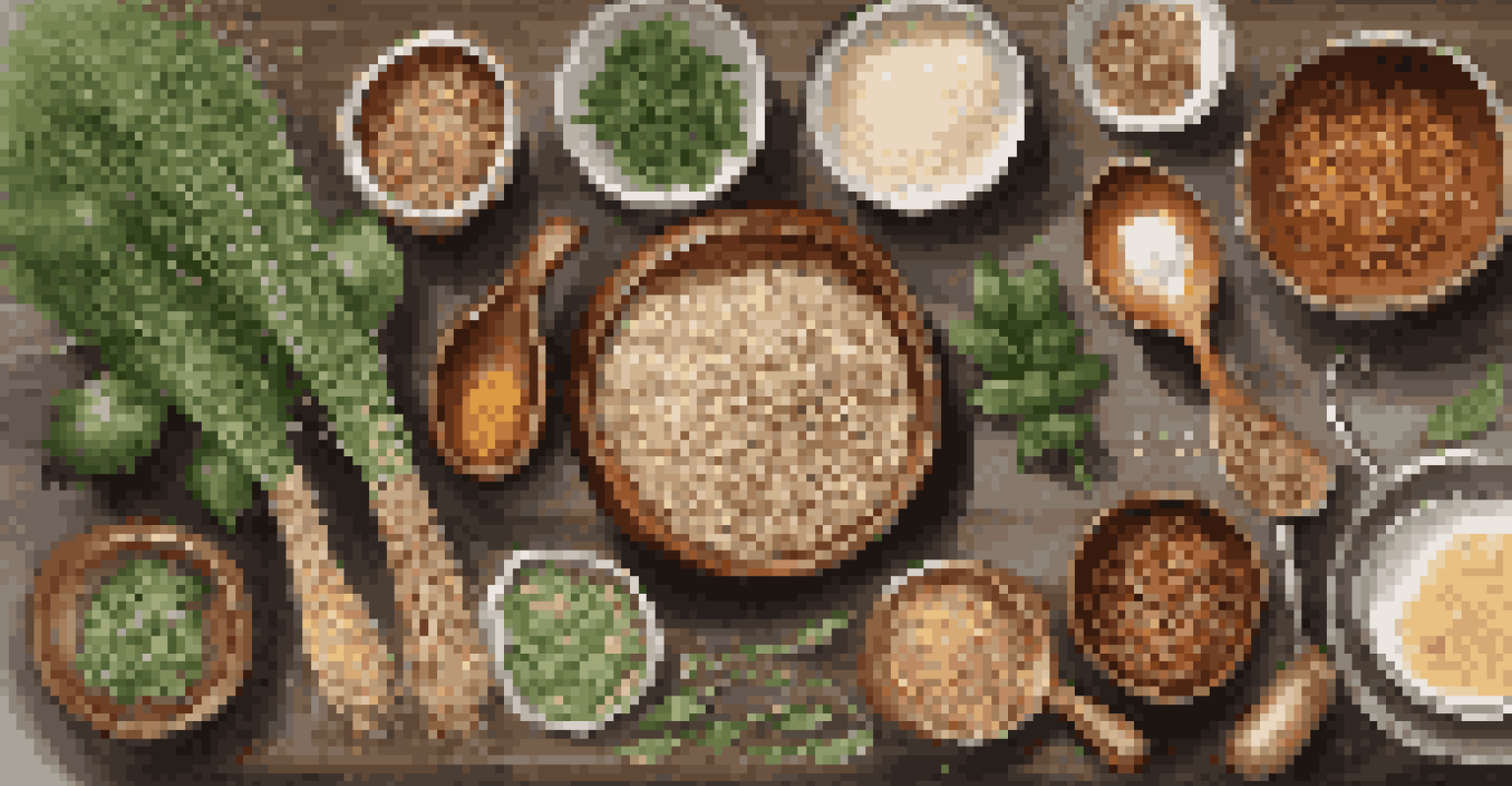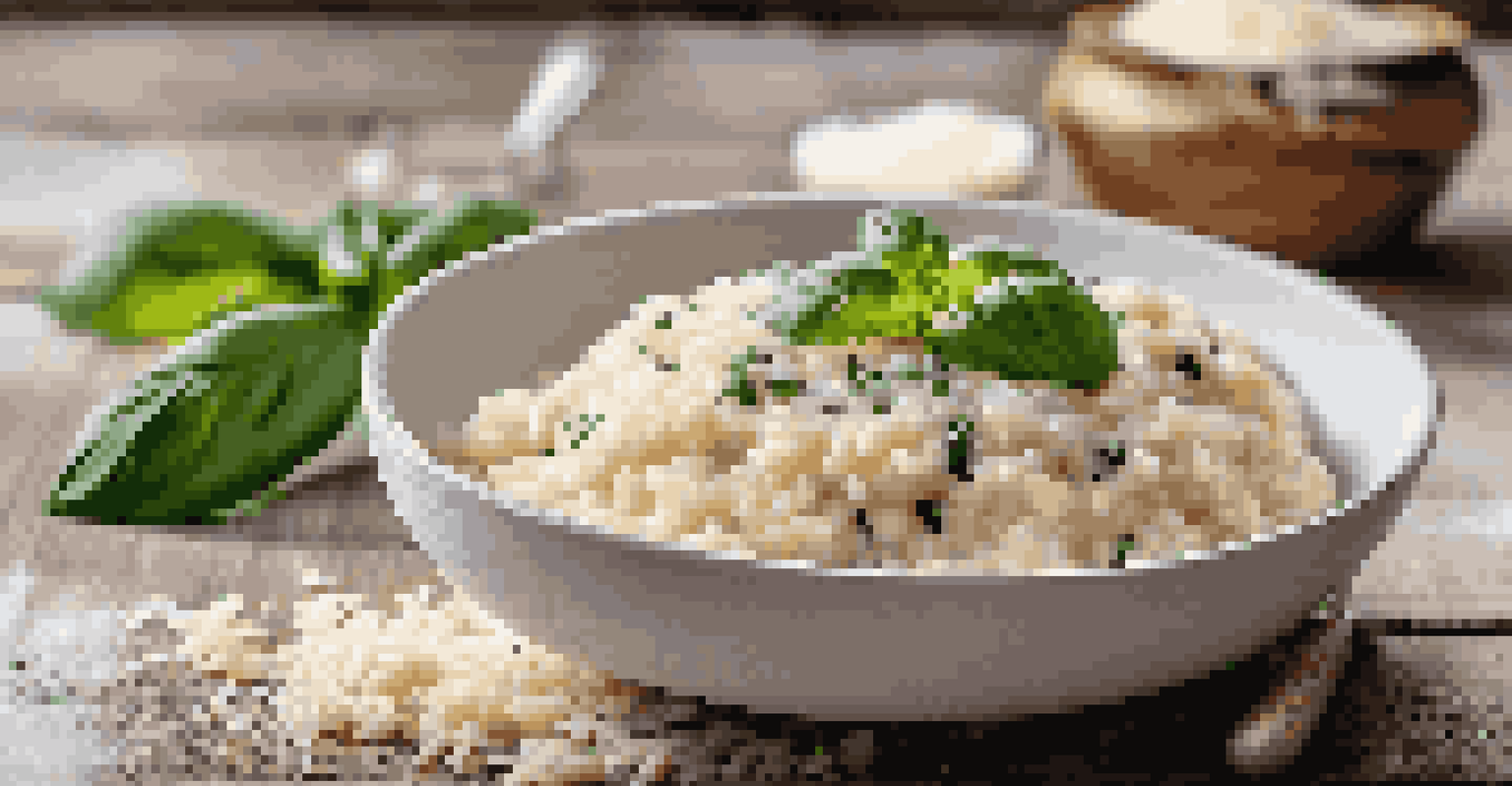Advanced Grains: Techniques for Nutty and Flavorful Dishes

Understanding the Basics of Advanced Grains
Advanced grains refer to a variety of grains that go beyond the typical rice and wheat. These include quinoa, farro, and barley, each with unique textures and flavors. Understanding these grains is the first step in elevating your culinary repertoire, as they offer diverse nutritional benefits and cooking methods.
Let food be thy medicine and medicine be thy food.
For instance, quinoa is not only gluten-free but also rich in protein, making it an excellent choice for vegetarians. Farro, on the other hand, has a chewy texture that adds depth to salads and grain bowls. By familiarizing yourself with these grains, you can transform ordinary meals into something extraordinary.
Incorporating advanced grains into your diet can be as simple as swapping them for traditional grains in your favorite recipes. Not only does this add variety, but it also enhances the overall nutritional profile of your meals, making them more satisfying.
Soaking Grains: Unlocking Flavor and Nutrients
Soaking grains before cooking is a technique that can significantly enhance their flavor and digestibility. This process allows grains to absorb water, making them plumper and more flavorful. It also reduces cooking time and helps in breaking down antinutrients, making the nutrients more accessible.

For example, soaking lentils for a few hours can cut their cooking time in half, allowing you to whip up a delicious soup or salad in no time. Similarly, soaking whole grains like farro can make them tender yet maintain their nutty flavor. The key is to rinse them thoroughly after soaking to remove any residual starch.
Explore Advanced Grains for Nutrition
Incorporating grains like quinoa, farro, and barley can enhance your meals with diverse textures, flavors, and nutritional benefits.
Incorporating this technique into your cooking routine not only saves time but also enhances the overall taste of your dishes. So the next time you're preparing grains, consider giving them a soak for a richer, more vibrant flavor.
Toasting Grains: A Simple Step to Boost Flavor
Toasting grains is a delightful way to infuse your dishes with a nutty aroma and deeper flavor. This technique involves cooking the grains in a dry skillet or pot for a few minutes before boiling or steaming them. The process caramelizes the natural sugars in the grains, enhancing their taste significantly.
Cooking is like love; it should be entered into with abandon or not at all.
For instance, toasting quinoa can transform its flavor from mild to a rich, nutty profile that complements various dishes. The same goes for brown rice and barley; a quick toast can make a world of difference. This method is especially effective when preparing pilafs or grain salads, where the flavor of the grain plays a starring role.
Incorporating toasted grains into your meals is not only easy but also a great way to impress your family and friends. Just a few minutes of extra preparation can elevate a simple dish into a gourmet experience.
Flavoring Grains with Broths and Stocks
Cooking grains in broth or stock is a game-changer for flavor. Instead of using plain water, substituting with vegetable, chicken, or beef broth infuses the grains with a rich taste that enhances the overall dish. This simple change can make even the most basic grain dish feel gourmet.
Take risotto, for example; the creamy texture and rich flavor come from slowly cooking arborio rice in broth. The same principle applies to quinoa or farro; cooking them in broth can add layers of flavor that plain water simply cannot provide. It’s a great way to make your meals more satisfying without much extra effort.
Enhance Grains with Cooking Techniques
Techniques like soaking, toasting, and cooking grains in broth can significantly improve their flavor and digestibility.
Experimenting with different types of broth can lead to unique flavor profiles. For a twist, try adding herbs or spices to the broth, which will further elevate the taste of your grains, making them the highlight of your meal.
Mixing Grains for Texture and Flavor Variety
Combining different types of grains can create a delightful medley of textures and flavors in your dishes. For example, mixing quinoa with barley or brown rice can add chewiness and a variety of nutritional benefits. This approach not only enhances the visual appeal of your meal but also adds depth to each bite.
You can also play with colors; red quinoa, brown rice, and farro come together beautifully to create a vibrant grain salad. This not only makes the dish more appealing but also introduces a wider array of nutrients. Each grain brings its own flavor, creating a complex and satisfying dish.
Don’t be afraid to experiment with ratios and combinations based on your preferences. The beauty of mixing grains lies in the endless possibilities that cater to various tastes and dietary needs.
Incorporating Herbs and Spices for Enhanced Flavor
Herbs and spices are essential for turning simple grain dishes into flavorful masterpieces. Adding fresh herbs like parsley, cilantro, or basil can brighten up a grain salad, while spices such as cumin or paprika can bring warmth and depth to cooked grains. This is where you can truly let your creativity shine.
For instance, a sprinkle of turmeric not only adds a beautiful golden color to your rice but also packs it with health benefits. Similarly, a dash of cinnamon can elevate the flavor of quinoa, making it a perfect base for both sweet and savory dishes. The right combination can transform a bland grain into a culinary delight.
Creative Serving Ideas for Grains
Presenting grains attractively with garnishes and colorful layers can elevate your dishes and make them more appealing.
Experimenting with different herbs and spices allows you to adjust flavors based on the season or your mood. With just a little creativity, you can create unique, flavorful dishes that will impress your guests and satisfy your palate.
Creative Serving Ideas to Showcase Grains
Once you've mastered the techniques for preparing advanced grains, it’s time to think about how to serve them. Presentation plays a key role in making your dishes more appealing. Consider using bowls or plates that highlight the colors and textures of the grains, enhancing the dining experience.
For example, serve a vibrant quinoa salad in a clear glass bowl to showcase the colorful vegetables mixed in. Alternatively, layering grains in a jar with various toppings can create a stunning visual effect that’s perfect for meal prep or picnics. The way you present your dish can elevate a simple meal into an eye-catching feast.

Don’t forget to garnish your dishes with fresh herbs or a drizzle of olive oil to add a finishing touch. Creative serving ideas not only make the meal more enjoyable but also encourage others to explore the world of advanced grains.